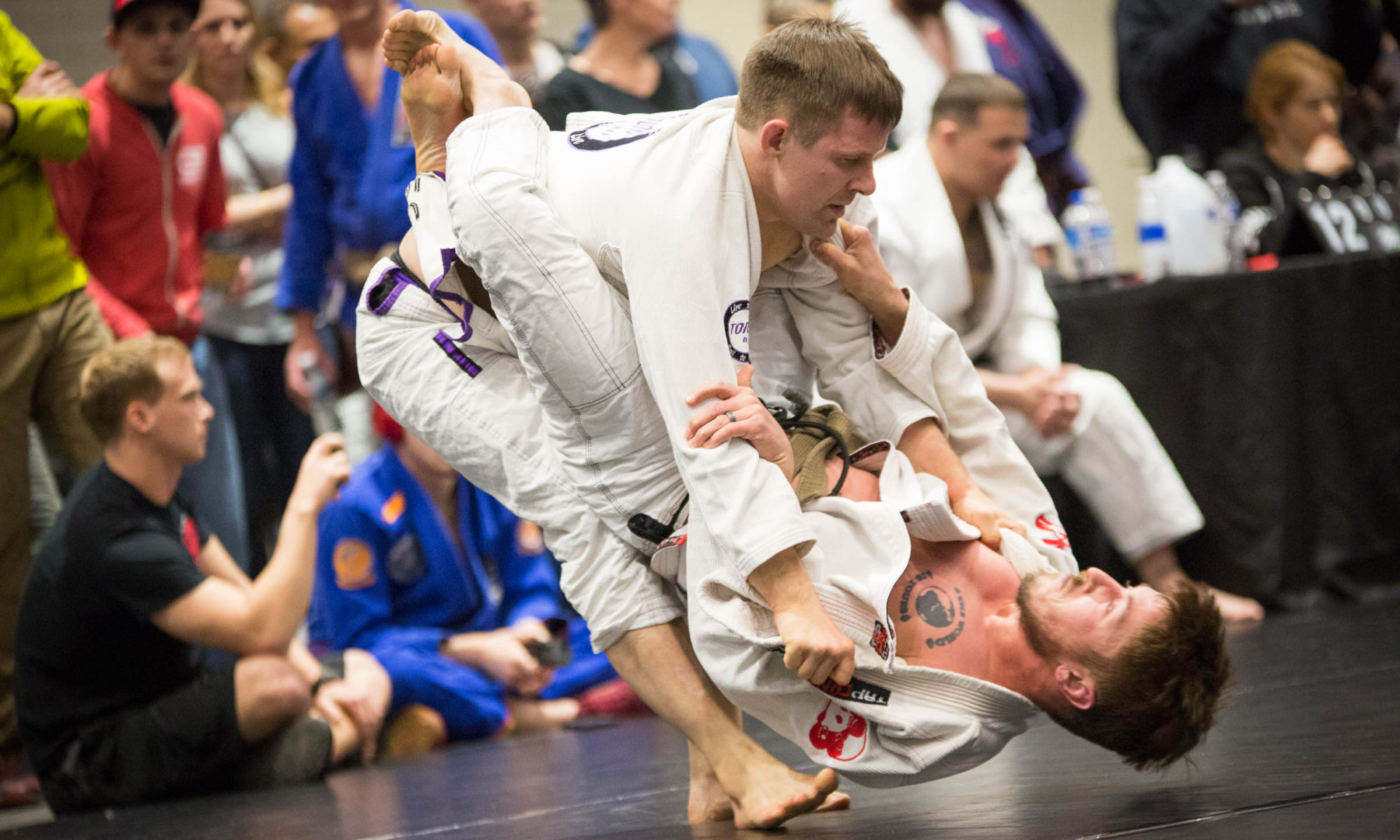Twice a week, I do 6 a.m. drilling. Most days we have between two and four people, but sometimes it’s just me and the cold gym.
We’ve all been there: you show up to open mat, put a gi on, get stretched out … and there’s no one to keep you company but the crickets. Or maybe you’re traveling and jonesing to train, but you can’t find a gym in the area. Or hey, maybe you’re just feeling antisocial.
Whatever the circumstances, sometimes you want to improve your jiu-jitsu but can’t find another grappler around to work with. You don’t want to waste that free time, do you? Of course you don’t, especially if you got up at 5:30 just to carve out a training session.
Some people collect baseball cards. Others collect autographs. I collect good drills, and I’ve been lucky enough to pick up some great solo training tips from terrific black belts. Here are some solo grappling drills to do on your own. These have been my salvation more than once when I’m by myself at 6 a.m.
Breakfall to Stand in Base Flow Drill: This drill combines two of the most fundamental Brazilian Jiu-Jitsu techniques. First, from a standing position, do a back breakfall. Then, come up to one side, with one foot posted in front of you and the opposite-side hand posted behind you. Rotate your hips toward the mat and stand up in a nice base.
Check out how to properly stand up in base here, just 12 seconds in:
[youtube=http://www.youtube.com/watch?v=vKShLC1ANrY#t=0m12s]
Since you’re back to a standing position, you might as well breakfall again and stand up in base on the opposite side, posting your other hand and other foot. This is a nice drill to warm up with, since you can get a good flow going, and it works two critical fundamental movements.
Hip Extension to Combat Base Drill: Roy Marsh, head instructor at Sandhills BJJ and a black belt under Royce Gracie, showed me this one. From your back, roll up onto your shoulder and extend your hips in the air. One leg should be straight and the other leg bent in front of you. From there, roll up to a combat base position (one knee up, one leg folded, elbows in tight). Roll back and repeat on the other side.
Be sure to step a fair distance with your extended leg. This drill can double as a good stretch, too: once you’ve come up to the combat base position you can play around with that.
Bridge to Turtle Drill: From your back with your feet in tight, bridge over one shoulder. As you thread our bottom leg back under to come to the turtle, sweep the mat with your mat-side hand to simulate clearing the hooks from someone trying to attack your back. Finish in a tight turtle position.
You can either sit to your back or roll over your shoulder to return to the original position. Then bridge to the other side. Again, this can be a nice flow.
Leg Circles From the Guard: Some people call this drill “the eggbeater.” You see a lot of guys doing this one to warm up for tournaments, and with good reason: it’s a core movement in the open guard. From your back, you rotate your legs in a circular motion like a windmill or an eggbeater. You can do this in each direction.
I mention it mainly to add one detail: a lot people do this drill with their back flat on the mat instead of raising the hips off the mat and moving from side to side during the leg circles. This is an important part of getting the movement down.
[youtube=http://www.youtube.com/watch?v=08Hpmef70XI]
Hip Bump Sweep Drill: For many of us, the hip bump is the first sweep we learn in jiu-jitsu. That’s because it works. Another good solo drill involves putting something in front of you to mimic your opponent – I use a hanging heavy bag, but you can use something as simple as your coiled belt – and practicing the hip bump motion. From the guard position, roll up smoothly onto your shoulder, elbow and then hand, plant your foot and simulate a hip bump. Again, be sure to work both sides.
Start slowly to be certain you hit each step of the technique, and gradually work your way up to a solid pace. Royce Gracie black belt Jake Whitfield showed me this one, and told me that just doing this a few minutes each day would improve my hip bumps – and all the techniques that a good hip bump sets up. He was right.
The hip bump starts at 1:03 in this video:
[youtube=http://www.youtube.com/watch?v=tZLYg0IKEZs#t=1m03s]
OTHER RESOURCES
I think it helps to pick up a variety of drills from lots of different sources. That way, you have a menu of options for when you’re by yourself and when you’re with a group or a partner. Having many drills to choose from means you always have something to work and no excuse for getting bored.
To that end, if you’re looking for more, the mighty Jason Scully has a great video of 33 solo drills.
[youtube=http://www.youtube.com/watch?v=EXjP50SOwK4]
Scully also put together 30 animal-themed movement drills as well.
[youtube=http://www.youtube.com/watch?v=uO8u_3Jmiqw]
Next post along these lines: some great partner and group drills.


